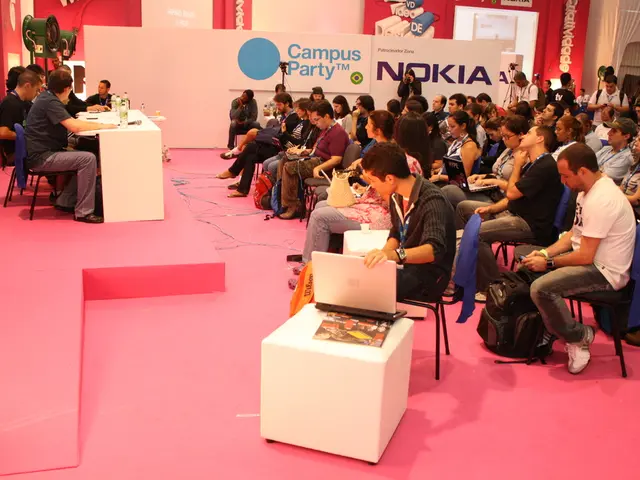Unveiling the Asus GeForce RTX 3050 LP BRK: Packing a Mighty Punch in a Compact Design
The tech world is abuzz with excitement as Asus unveils the GeForce RTX 3050 LP BRK, a low-profile graphics card designed for small form factor PC enthusiasts and budget-conscious gamers. This new addition caters to a broad audience, offering impressive performance and versatile display options.
Powered by NVIDIA's GeForce RTX 3050 6GB GPU, the RTX 3050 LP BRK boasts a CUDA Core count of 2304. The memory bus for this compact powerhouse is 96-bit, ensuring smooth and efficient data transfer.
One of the standout features of the RTX 3050 LP BRK is its energy-efficient design. With a TDP (Thermal Design Power) of just 70W, this graphics card is not only powerful but also environmentally friendly. Moreover, its low power draw eliminates the need for external PCIe power connectors, making it an ideal choice for upgrading pre-built PCs or systems with limited PSU capacity.
The RTX 3050 LP BRK offers versatile display outputs, including DVI-D, HDMI 2.1, and DisplayPort 1.4a. HDMI 2.1 provides high-resolution, high-refresh-rate gaming and media consumption, while DVI-D ensures compatibility with older monitors and displays.
The RTX 3050 LP BRK's compact design and impressive performance make it a compelling choice for a wide range of use cases. It's expected to be competitively priced, likely in line with MSI's existing low-profile RTX 3050 offering. For those interested, the RTX 3050 LP BRK is available for comparison on PCPartPicker, a popular PC components comparison website.
For a deeper understanding of the RTX 3050 LP BRK's performance, let's delve into some benchmark figures. In a system configuration with an Intel Core i7-4790S and GeForce RTX 3050, the bottleneck percentages indicate how much the CPU limits the GPU's performance. At lower resolutions like 640x480 up to 1280x1024, the bottleneck is generally moderate, with percentages ranging from about 25% to 46% for GPU-intensive tasks.
However, in a configuration with an AMD Ryzen 5 5600GT and GeForce RTX 3050, the bottleneck is more pronounced at higher resolutions, especially for resolutions like Ultra-Wide QHD (3440x1440) and 4K UHD (3840x2160). The bottleneck is intermediate to high, indicating that the CPU may limit the GPU's potential at these higher resolutions.
The RTX 3050 LP BRK comes with 6GB of GDDR6 memory and supports NVIDIA's AI-enhanced features. The Boost Clock speed for the GeForce RTX 3050 LP BRK is 1470 MHz (1500 MHz in OC Mode). Furthermore, it includes DisplayPort 1.4a for support of adaptive sync technologies like G-Sync for tear-free gaming.
In conclusion, the ASUS GeForce RTX 3050 LP BRK is a mid-range graphics card suitable for 1080p to 1440p gaming, with performance that can be limited by the system's CPU in higher resolutions. Its compact design, energy-efficient nature, and versatile display options make it an attractive choice for a wide range of users.
Artificial intelligence can be used to optimize the performance of the Asus GeForce RTX 3050 LP BRK, as it comes with AI-enhanced features.
The low-profile RTX 3050 LP BRK is not only suitable for gaming, but also for keeping up with the latest technology trends in gadgets and hardware.
Asus's new graphics card is expected to be a strong competitor in the gaming news circuit, offering a balance between price and performance for budget-conscious gamers.
Gamers interested in the RTX 3050 LP BRK can find detailed benchmark figures and compare it with other cards on technology-focused websites like PCPartPicker.





